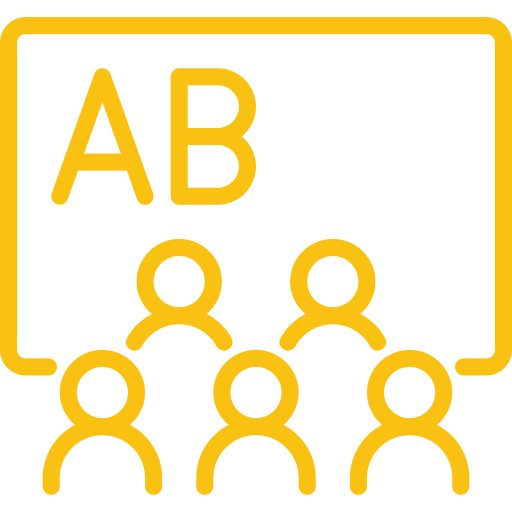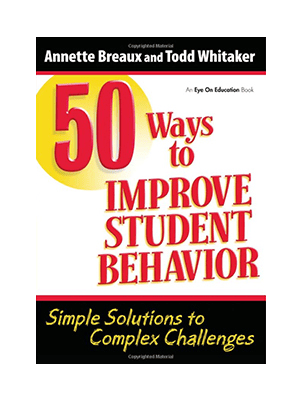Have you ever noticed how some teachers just seem to weave magic into their lessons? The secret might just lie in the concept of micro teaching.
Imagine breaking down the complex art of teaching into manageable, bite-sized pieces. That’s exactly what micro teaching does – it lets educators focus on specific skills, refine them through practice and feedback, and gradually build their confidence.
Developed in the 1960s by Dwight Allen at Stanford University, this technique has proven its worth by offering a staggering ROI not just in monetary terms but more importantly, in educational outcomes.
Table Of Contents:
- What is Microteaching?
- The Microteaching Cycle
- Developing Essential Teaching Skills Through Microteaching
- Preparing for Your Microteaching Lesson
- Delivering Your Microteaching Lesson
- Reflecting and Improving Your Teaching Practice
- FAQs in Relation to Micro Teaching
- Conclusion
What is Microteaching?
Microteaching is a game-changer in the world of teacher training. It’s a technique that lets student teachers practice and polish their teaching skills in a low-risk, simulated classroom setting. The method was developed way back in the late 1950s and early 1960s by Dwight Allen and his team at Stanford University. But it’s not just for newbies – even experienced teachers use microteaching to fine-tune their skills.
How Microteaching Works
Here’s how it goes down: a concentrated, focused form of peer feedback and discussion that can level up teaching strategies. It was developed in the early and mid 1960’s by Dwight Allen and his colleagues at the Stanford Teacher Education Program (Politzer, 1969).
The microteaching program was designed to get students ready for their fall internships. In this early version, pre-service teachers at Stanford taught part-time to a small group of pupils (usually 4 to 5).
The pupils were high school students who were paid volunteers and represented a cross-section of the types of students the pre-service teachers would face during their internships.
Benefits of Microteaching
Micro teaching is a total win for teachers. Check out these perks:
- Boosting presentation skills and confidence
- Developing must-have teaching skills like stimulus variation, reinforcement, questioning, and classroom management
- Getting constructive feedback from peers and supervisors to identify areas to work on
- Engaging in reflective practice to continuously refine teaching techniques
Disadvantages of Microteaching
While microteaching is pretty awesome, it does have some limitations:
- The artificial classroom setting might not fully replicate real teaching conditions
- The short duration of micro lessons may not allow for a complete demonstration of skills
- Peer audiences may not provide authentic student reactions and challenges
- Overemphasis on specific skills may lead to a fragmented view of the teaching process
The Microteaching Cycle
Classroom Instruction
In a typical microteaching session, the teacher conducts a short lesson, usually 5-10 minutes, to a small group of peers or students. This mini lesson focuses on demonstrating a specific teaching skill or strategy (for example, spending a small time teaching soft skills).

Lesson Planning
Effective microteaching starts with careful lesson planning. Teachers should:
- Choose an interesting topic and set clear learning objectives
- Design engaging learning activities that align with the objectives
- Sequence the lesson in a logical and coherent manner
- Plan for potential questions and challenges that may arise
After delivering the micro lesson, the teacher gets immediate feedback from the audience, supervisor, and video recording. This feedback focuses on specific aspects of the lesson, like presentation skills, student engagement, and achievement of learning objectives. The feedback session lets the teacher identify strengths and areas for improvement.
Re-plan and Reteach
Based on the feedback, the teacher plans the lesson again, incorporating suggested changes and improvements. The revised lesson is then retaught to a different group of peers or students. This cycle of teaching, feedback, and improvement allows teachers to refine their skills and develop effective teaching strategies.
Developing Essential Teaching Skills Through Microteaching
Stimulus variation involves using a variety of teaching methods, materials, and activities to keep students interested and attentive. Through microteaching, teachers can practice techniques like varying voice modulation, using gestures and movement, and incorporating multimedia to engage students.
Positive Reinforcement
Positive reinforcement is key for motivating students and encouraging desired behaviors. Microteaching lets teachers practice giving specific, timely, and sincere praise to students. They can also experiment with different types of reinforcement, like verbal praise, nonverbal cues, and rewards.

Probing Questions
Probing questions stimulate critical thinking, encourage student participation, and assess understanding. Microteaching provides an opportunity for teachers to practice asking different types of questions, like open-ended, convergent, and divergent questions. They can also learn to use questioning techniques like wait time and redirecting to engage students.
Classroom Management
Effective classroom management is crucial for creating a positive learning environment. Through microteaching, teachers can practice strategies for managing student behavior, like establishing clear rules and consequences, using nonverbal cues, and redirecting off-task behavior. They can also learn to create a warm and supportive classroom climate that promotes student learning.

Key Takeaway:
Microteaching revolutionizes teacher training by offering a low-risk way to hone skills through peer feedback and reflection, despite its limitations like the artificial setting. It’s not just for beginners but also helps seasoned educators sharpen their techniques.
Preparing for Your Microteaching Lesson
When it comes to microteaching, the key is in the preparation. You want to make sure you have a solid lesson plan in place before stepping in front of your peers.
Choosing an Interesting Topic
First things first, pick a topic that will engage your audience. Consider the subject matter you’re passionate about and that will also be relevant to your peers. Remember, this is your chance to showcase your specific teaching skills. So choose wisely.
Setting Clear Learning Objectives
Once you have your topic, it’s crucial to set clear learning objectives. What do you want your “students” to take away from the lesson? Having well-defined goals will help keep your lesson on track and ensure you’re providing value. Plus, it’ll make it easier for your peers to provide feedback on whether you achieved what you set out to do.
Now for the fun part – designing learning activities that will keep your audience engaged. This is where you can get creative and really let your teaching style shine. Whether it’s a hands-on demonstration, a thought-provoking discussion, or an interactive game, the key is to make it memorable. Just remember to keep it concise – you only have a short amount of time to make an impact.
Sequencing Your Lesson Effectively
Last but not least, make sure you sequence your lesson in a logical way. Start with the basics and build up to more complex concepts. Use transitions to flow smoothly from one point to the next. And don’t forget to leave time for questions and constructive feedback at the end.
By following these steps and channeling educators like Dwight Allen and John Hattie, you’ll be well on your way to delivering a successful micro-teaching lesson that showcases your skills and leaves a lasting impression.
Delivering Your Microteaching Lesson
You’ve prepared, you’ve practiced, and now it’s go-time. Delivering your microteaching lesson is your chance to put all that hard work into action. First and foremost, remember to project confidence.
Even if you’re feeling nervous, fake it ’til you make it. Stand tall, make eye contact, and speak clearly. Your peer group is there to support you, not judge you. So take a deep breath and dive in.
Using Effective Teaching Strategies
Now’s the time to put those teaching strategies to work. Whether you’re leading a discussion, giving a lecture, or facilitating an activity, keep your audience engaged. Use questioning techniques to encourage participation and check for understanding. Incorporate visuals to illustrate key points.
And don’t be afraid to think outside the box – sometimes the most memorable lessons are the ones that break the mold.
Speaking of engagement, it’s crucial to keep your small group actively involved throughout the lesson. Encourage them to ask questions, share their own experiences, and provide peer feedback.
The more invested they are, the more likely they are to retain the information and provide valuable insights. Plus, an engaged audience makes for a more enjoyable teaching experience all around.
Managing Classroom Dynamics
Of course, even in a microteaching setting, classroom management skills come into play. Pay attention to group dynamics and be prepared to redirect if necessary. If a discussion gets off track or a participant becomes disruptive, gently guide things back on course.
The goal is to create a positive learning environment where everyone feels heard and respected. By employing these strategies and staying focused on student learning and student achievement, you’ll be well-equipped to deliver a microteaching lesson that students understand and that showcases your skills as an educator. And who knows – you might even discover some new techniques to add to your teaching toolkit along the way.
Reflecting and Improving Your Teaching Practice
Congratulations, you’ve successfully delivered your microteaching lesson. But the learning doesn’t stop there. In fact, the real growth happens in the reflection and improvement process. After your lesson, you’ll have the opportunity to receive feedback from your peers and instructors. This is where the magic happens.
Take the time to really listen to and absorb their comments and suggestions. Look for patterns and themes in the feedback – what did you do well? Where is there room for improvement?

Setting Professional Growth Goals
Based on that feedback, set some concrete goals for your professional development as a teacher. Maybe you want to work on your questioning techniques or incorporate more technology into your lessons. Whatever it is, write it down and make a plan for how you’ll achieve it. Having a clear roadmap will help you stay focused and motivated.
Of course, setting goals is one thing – actually implementing changes is another. But that’s where the real growth happens. Take the insights from your microteaching session and feedback session and start putting them into practice in your teaching.
It might feel awkward at first, but stick with it. Remember, teaching is a skill that requires ongoing practice and refinement. Embrace the process and celebrate the small victories along the way.
Continuously Refining Your Skills
And that brings us to the final and most important point – never stop learning and growing as a teacher. The best educators are the ones who are always seeking out new ideas, techniques, and perspectives. Attend workshops and conferences, read up on the latest research, and seek out mentorship from experienced teachers.
The more you invest in your own professional development, the more your students will benefit. So embrace the feedback, set those goals, and keep pushing yourself to be the best teacher you can be. Your students (and your future self) will thank you for it.
Key Takeaway:
Prep is key in microteaching: Pick an engaging topic, set clear goals, design memorable activities, and sequence your lesson well. Then deliver with confidence using effective strategies to engage and manage the classroom. Afterward, reflect on feedback to improve. Never stop learning to be a great teacher.
FAQs in Relation to Micro Teaching
What is an example of Microteaching?
A teacher rehearses a 10-minute lesson on fractions with a small group, then tweaks it based on feedback.
What are the 5 importance of micro-teaching?
It boosts confidence, hones specific skills, encourages reflection, offers constructive criticism, and fine-tunes classroom management tactics.
What are the 5 processes of micro-teaching?
The steps include planning a lesson, teaching it to peers or students briefly, receiving feedback, re-planning it, and finally re-teaching for mastery.
What are the six micro-teaching techniques?
Six key techniques include explaining clearly, asking questions effectively, using visual aids smartly, managing discussions smoothly, stimulating thinking quickly, and providing positive reinforcement accurately.
Conclusion
So here we are at the end of our journey through the world of micro teaching. Far from being an academic relic stuck in time, it stands as a beacon for those eager to enhance their pedagogical craft. It’s clear that when wielded correctly, micro teaching isn’t just another method; it’s a powerful tool designed to elevate everyday classroom experiences into something truly remarkable.
The beauty lies not only in mastering new techniques but also seeing tangible improvements ripple outwards from individual classrooms to shape brighter futures for students worldwide. In essence, embracing micro-teaching is akin to setting off on an ever-evolving quest towards becoming an even more effective educator – one lesson plan at a time.
Microteaching involves a lot of work, but every step makes the process easier, and enables teachers to improve teaching the skills required for a truly successful school.
If you’re looking for more information, check us out below for your graduate course needs. We’re here to help!

























